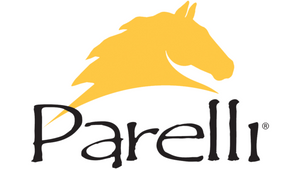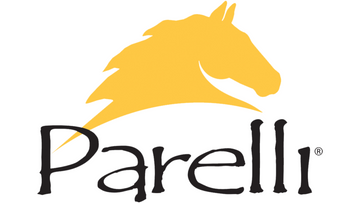Horse Ownership for Beginners: A Complete Guide
vid Parelli Management på Jun 04, 2025

Owning a horse is rewarding and a big responsibility that requires careful planning and commitment. Whether you're dreaming of trail rides through open fields or competing in equestrian events, the journey to horse ownership starts with understanding what it takes to properly care for your horse. There's a lot to consider, from finding the right horse and budgeting for expenses to purchasing the right equipment and finding the right support network.
Buying a Horse
Research & Determine Needs
Buying a horse is a serious commitment. Before buying a horse, you should research for your needs and everything that goes into owning a horse.
When looking for a horse, you want to consider your needs:
-
Purpose of Horse (pleasure riding, competition, work, companionship)
-
Size of Horse
-
Demeanor of Horse
-
Horse's history
-
Age of Horse
-
Horse’s Education/Development
Ultimately, you want to determine your needs in a horse to help you narrow down the choices. An experienced horse person can help you choose the right horse for you.
Setting a Budget
Buying and owning a horse can be a costly venture. After all, ownership includes the care expenses of a horse. Create a budget for purchasing your horse and the expected (and unexpected) expenses of horse ownership. After the initial cost of purchasing your horse, you may also need to budget for the cost of training.
You will need to account for these expenses for basic horse care:
-
Veterinary services, including dental care
-
Farrier work
-
Education for yourself and your horse
-
Feed and Hay
-
Supplements
-
Building a stable or boarding fees
First-time horse owners likely do not have the necessary equipment to care for or ride a horse. You will need to purchase tack and other equipment.
Pre-purchase Exams
A pre-purchase exam can help calm any fears you have about purchasing a horse. Choose a trusted veterinarian to assess the horse's health and soundness. Your veterinarian will perform a physical exam, check for any signs of lameness, and may offer to take bloodwork. This is an additional upfront cost to purchase a horse, but it can start your adventure on the right hoof.
Necessary Supplies
Tack and Riding Equipment
For new horse owners, tack is the equipment you use and could include:
-
Carrot Stick and String for groundwork
-
Bridle with Reins or Hackamore
-
Saddle, Pad, Stirrups, Girth
Grooming Supplies
Horses require a significant amount of grooming to keep their coat and hooves in good condition. You will need bathing supplies and grooming supplies. Curry combs, brushes, and hoof picks are all essential grooming items.
Health and First Aid Supplies
First aid equipment is mandatory on a ride or around the stable. You should always have wraps, bandages, and antiseptics on hand. Additionally, a thermometer to monitor body temperature is essential. Finally, dewormers and fly spray will help keep your horse healthy and comfortable.
Feeding and Watering Equipment
Besides feed, hay, and water, you will also need a way to feed your horse. Purchase safe storage bins to protect your feed from other animals. Moreover, you will need hay nets, feed buckets, and water buckets. Some owners even purchase automatic waterers to make it easier to provide water.
Stable and Tack Room Supplies
You will want to organize your tack room so you can easily find anything you need. You will also need items to clean and maintain your stable, such as brooms, muck forks, and storage bins.
Riding Clothing
Experienced riders may already have their riding equipment, but new riders will need to purchase it. Riding clothes are primarily for safety and comfort. Before ever riding a horse, you should buy a riding helmet to protect yourself in case of falls. Riding boots are also an essential purchase to protect your legs from brush or from your feet sliding through the stirrups.
Finding Your Community
Licensed Parelli Professional
You will want to work with a Licensed Instructor as a first-time horse owner. With more than 120 instructors worldwide, you may find one close to home or who travels to your area. You can also search for clinics in your region with visiting instructors or possibly sign up for Virtual Coaching. A horse professional can teach you and your horse the basic groundwork skills for safety and success. Once you and your horse are ready to ride, he or she will coach you through the pre-ride checks, tack fit and safety and the essential yields and patterns you need. Your instructor can also guide you in daily care and give other advice on the maintenance of your horse. Whether you plan to use your horse for pleasure or competition, you will need the guidance of a coach/instructor.
Veterinarian
No one can own a horse without a trusted veterinarian in their corner. Your veterinarian can help guide new horse owners through every topic, from daily care to hoof care. Make sure to ask questions about 24/7 emergency coverage. Some clinics offer emergency services, while others will refer to different clinics during emergencies.
Other Horse Support
There are other people you need on your horse care team. Surrounding yourself with a knowledgeable support team is vital to your success as a new horse owner. The Parelli Community is a free Online network of horse lovers just like you who are learning, growing, and studying the Parelli home study program so they can have a great horse life. If you haven’t already, join the free community today and connect with horse lovers worldwide. Local clubs are also a great way to socialize, learn, and gain experiences with your horse and others in your area. Finding an excellent farrier is also important. Ask your veterinarian or trainer for recommendations.
In Case of Emergency
Normal Vitals Signs & How to Take Them
To know if your horse is having a medical emergency, you need to know when you have a healthy horse. In addition to knowing the level of emergency, vital signs are the first things your veterinarian’s office will ask when you call.
Pulse
Normal: 28-44 beats per minute (at rest)
How to Check: Place two fingers on the artery at the jaw.
Respiration
Normal: 8-16 beats per minute (at rest)
How to Check: Watch the flank or nostrils.
Temperature
Normal: 99-101°F
How to Check: Use a digital rectal thermometer.
Medical Emergency Plan
Horses are amazing animals to own, but they can sometimes get into dangerous situations. If your horse experiences a medical emergency, you will want to have a plan in place. Keep an emergency kit to handle wounds and minor injuries in your car or stable. Save the contact information for your veterinarian and alternative emergency contacts in your phone. Finally, you will want to create a transport plan. In an emergency, you may need to transport your horse to the veterinarian.
Natural Disaster Emergency Plan
Sometimes, the unexpected can happen in our world. You need to establish a plan and practice an evacuation beforehand so you and your horse are prepared.
-
Have a transportation plan (borrow or own a trailer) and practice trailer loading.
-
Identify evacuation routes away from your home and to a secure, local stable.
-
Pack emergency supplies and regularly check them, such as feed, fresh water, medications, and hay.
-
Bring all necessary documentation, such as health records.







